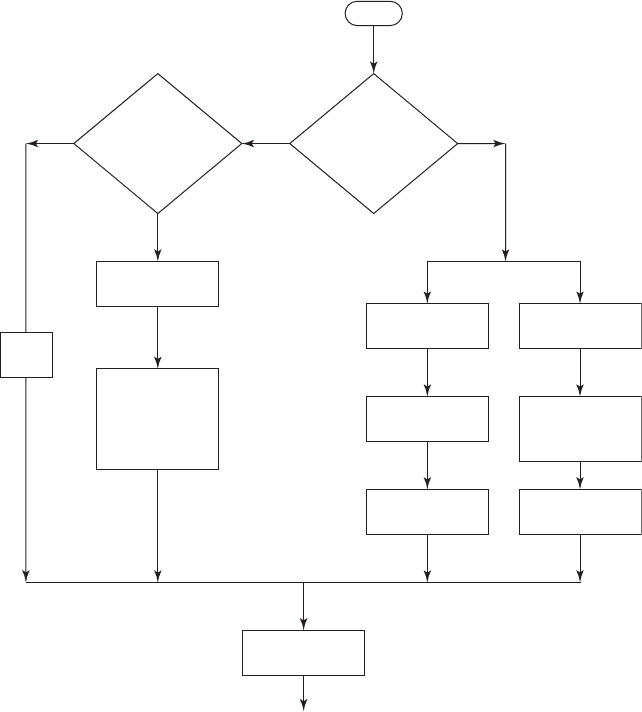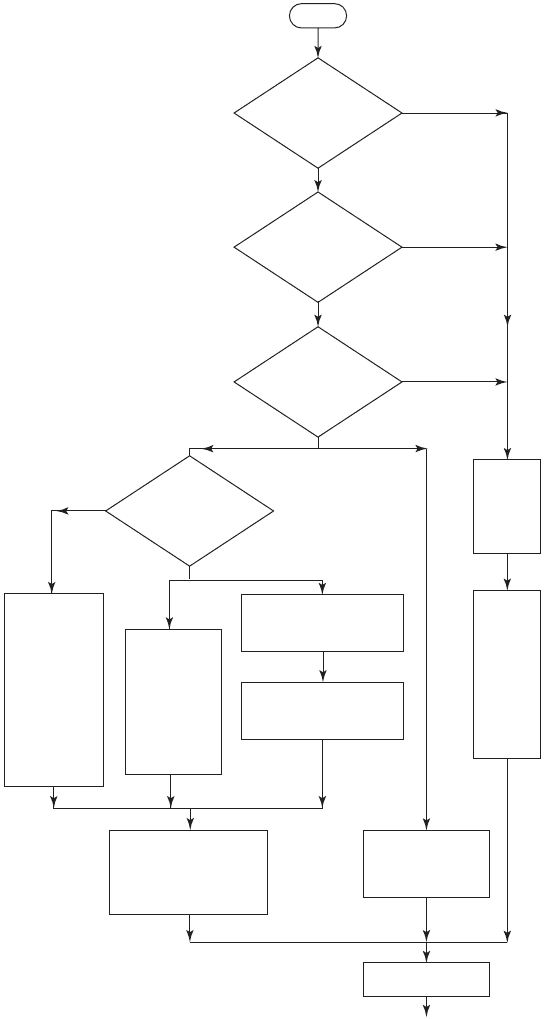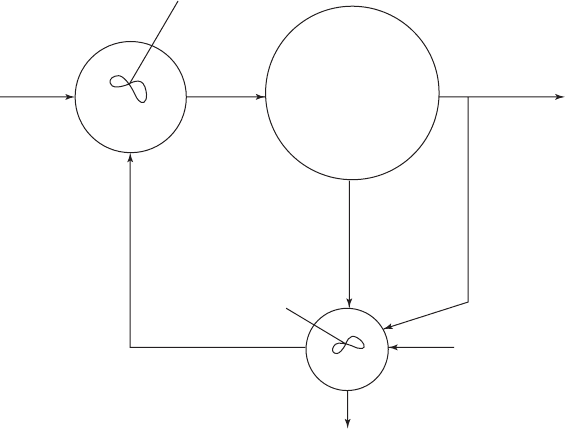Water and Wastewater Engineering
Подождите немного. Документ загружается.


14-10
TABLE 14-2 (continued)
Arsenic treatment technologies summary comparison
Precipitative Processes
Enhanced lime
softening
Enhanced
(conventional)
coagulation filtration
Coagulation-assisted
micro-filtration
Coagulation-assisted
direct filtration Oxidation filtration
Factors LS CF CMF CADF OxFilt
Best available technology
(BAT)
a
Yes Yes No Yes Yes
Small System Compliance
Technologies (SSCT)
a
No No Yes Yes Yes
System size
a,b
25–10,000 25–10,000 500–10,000 500–10,000 25–10,000
Removal efficiency
c
90% 95% (w/FeCl
3
)
90% (w/Alum)
90% 90% 50–90%
Total water loss 0% 0% 5% 1–2% 1–2%
Preoxidation required
d
Yes Yes Yes Yes Yes
Optimal water
Quality conditions
pH 10.5 – 11
e
5 mg/L Fe
3 e
pH 5.5 – 8.5
f
pH 5.5 – 8.5
f
pH 5.5 – 8.5
f
pH 5.5 – 8.5
0.3 mg/L Fe
Fe:As Ratio 20:1
Operator skill required High High High High Medium
Waste generated Backwash water,
Sludge (high volume)
Backwash water,
Sludge
Backwash water,
Sludge
Backwash water,
Sludge
Backwash water,
Sludge
Other considerations Treated water
requires pH
ad
justment.
Possible pre & post
pH adjustment.
Possible pre & post
pH adjustment.
Possible pre & post
pH adjustment.
None.
Centralized cost
Low
g
Low
g
High Medium Medium
a
U.S. EPA, 2002.
b
Affordable for systems with the given number of people served.
c
Depends on arsenic and iron concentrations.
d
Preoxidation only required for As(III).
e
AwwaRF, 2002.
f
Fields, et al., 2000.
g
Costs for enhanced LS and enhanced CF are based on modification of an existing technology. Most small systems will not have this technology in place.

REMOVAL OF SPECIFIC CONSTITUENTS 14-11
TABLE 14-3
Typical sorption treatment design and operating parameters
Parameter IX AA IBS MIR
Media bulk density, kg/m
3
640–700 640–750 1,100–1,200 N/A
Minimum column layers
Freeboard, %
90
a, b
50
c
50 N/A
Media, m
1–1.5
b
1–1.5
c
0.8–1.0 0.8–1.0
Operating conditions
Hydraulic loading rate m
3
/d · m
2
470–700
b
230–530
c
300–470 300–600
Empty bed contact time min 1.5–5
3–12
c
3.5 2–8
Downflow pressure drop,
d
kPa/m
2
50–100
e
10
f
N/A N/A
Maximum pressure differential, kPa 100 35 24 N/A
Backwash conditions
Backwashing flow rate, m
3
/d · m
2
180–230
b
400
c
N/A
Backwashing duration, min
5–20
b
10
c
N/A
Regeneration conditions
a
Brine strength, wt % 6–10 — — —
Downflow rate m
3
/d · m
2
120–350———
Regenerant volume m
3
/m
3
resin 2.7 — — —
Rinsing conditions
Slow rinse rate, m
3
/d · m
2
25–270 — — —
Fast rinse rate, m
3
/d · m
2
120–1,200 — — —
Displacement requirements, BV 4–6 — — —
a
This will be very resin specific. Check with the resin manufacturer before design. Assumes AA is not regenerated.
b
Rubel, 2001.
c
Rubel, 2003.
d
This depends on temperature, type of media, and hydraulic loading rate.
e
For strong base anion exchange resin at 20 C and 25 m
3
/h · m
2
f
For AA at 5 m
3
/h · m
2
N/A—Not Available.
Source: Clifford, 1999; Cook, 2007; U.S. EPA, 2003.
and reclassify the medium. Following a 5 to 10 minute backwash, a 60 to 75 minute slow rinse
(0.020 m
3
/ min · m
2
) with a 1 to 4 perc ent NaOH solution is used. The NaOH is followed by a
slow rinse with water. A slow acid rinse follows the base (nominally 2 percent H
2
SO
4
or HCl)
that, in turn, is followed by a s low water rinse before putting the unit back in service. Detailed
instructions on this complex regeneration process and schematic drawings are provided in the
AWWA manual (2004) as well as in Rubel and Woos ley (1979). Typical design criteria are
shown in Table 14-4 .
If lime-soda s
oftening is practiced, fluoride can be removed by suitable pH adjustment.
14-5 IRON AND MANGANESE
Iron and manganese often occur together, and the treatment technologies are similar, so they
are grouped together for this discussion. They are removed from water for aesthetic reasons. In
o xidized form [Fe(III) and Mn(IV)], they impart color to water and stain fixtures and clothing.

14-12 WATER AND WASTEWATER ENGINEERING
Iron stains are a red or rust color. Manganese stains are brown or black. For these reasons, the U.S.
EPA set secondary drinking water MCLs of 0.3 mg/L for iron and 0.05 mg/L for manganese.
While quite insoluble in their oxidized form , they are very soluble in their reduced forms
[Fe(II) and Mn(II)]. They are commonly ass
ociated with anoxic groundwater and hypolimnetic
water in eutrophic lakes. Although more commonly found in the low mg/L range, in groundwa-
ter with low alkalinity, total iron concentrations may reach 10 mg/L or more. Concentrations of
Mn
2
are on the order of 0.1 to 2.0 mg/L (Kawamura, 2000; MWH, 2005).
Treatment Strategies
Preoxidation. The most common method of removing iron and manganese is based on the
conversion of the soluble forms to insoluble forms by oxidation. Oxidation with air, chlorine,
chlorine dioxide, and permanganate are common in the United States. Ozone has been used suc-
cessfully in Europe.
The oxidation-re
duction reactions with air are (AWWA, 1990):
4248
3 22 2 3 2
FeHCO O HO FeOH CO() () →
(14-5)
TABLE 14-4
Typical design criteria for removal of fluoride by activated alumina
Parameter Typical range or value
Treatment
Media
Capacity 3,000 to 5,000 g/m
3
Size 28 48 mesh
Depth 1 to 1.5 m
Filtration rate 90 to 400 m
3
/d · m
2
Volume concentration 1,000 to 1,500 bed volumes depending on the F
Backwash flow rate 470 to 550 m
3
/d · m
2
Backwash time 5 to 10 minutes
Regeneration
Regenerant 1% NaOH
Flow rate 30 m
3
/d · m
2
Volume 5 bed volumes
Time 60 to 75 min
Rinse volume 2 bed volumes
Rinse flow rate 30 m
3
/d · m
2
Regenerant 2% H
2
SO
4
Flow rate 30 m
3
/d · m
2
Volume
1.5 bed volumes typically
a
Rinse volume 2 bed volumes
Rinse flow rate 30 m
3
/d · m
2
a
To neutralize the bed to pH 5.5.
A dapted from Clifford, 1999; Kawamura, 2000.
REMOVAL OF SPECIFIC CONSTITUENTS 14-13
22 2224
4 3 22 2 4 2 2
MnSO Ca HCO O MnO CaSO H O CO () →
(14-6)
These reac tions are quite s low. At a pH of 7.5 to 8.0, the iron reaction m ay take between
15 minutes and one hour (Hand et al., 1999; MWH, 2005). GLUMRB (2003) recommends a min-
imum detention time of 30 minutes after aeration. At a pH of 9.5, manganese oxidation requires
an hour. At lower pH values, manganese oxidation with air is not practi
cal.
The oxidation-reduction reactions with chlorine are (AWWA, 1990):
226
3 2 3 22 3 2
Fe HCO Ca HCO Cl FeOH CaCl CO() () () →
22
(14-7)
Mn HCO Ca HCO Cl MnO CaCl H O CO()()
3
2
3
22 2 2 2
24 →
22
(14-8)
At a pH of 8.0 to 8.5, the oxidation time is about 15 to 30 minutes for iron. Oxidation of Mn
2
requires two to three hours at this pH. If ammonia is present it will consume chlorine and signifi-
cantly increase the time for oxidation (MWH, 2005).
The oxidation reactions with chlorine dioxide are (AWWA, 1990):
Fe HCO NaHCO ClO FeOH NaClO CO() ()
3 2 3 2 3 22
3 →
(14-9)
Mn HCO NaHCO ClO MnO NaClO H O()
3 2 3 22 22
22 224 → CCO
2
(14-10)
With a pH of 5.5, in the absence of natural organic matter (NOM), the oxidation time for iron
is about 5 seconds and about 20 seconds for manganes e. At higher pH values the reaction rate
is faster. NOM does not interfere with the oxidation of Mn
2
b ut inhibits the oxidation of Fe
2
almost completely (MWH, 2005).
The oxidation reactions with permanganate are (AWWA, 1990):
3 2 35
3 242 3 2 3
FeHCO KMnO H O FeOH MnO KHCO() () → CCO
2
(14-11)
3 2 5 224
3 2423 22
Mn HCO KMnO MnO KHCO H O CO()→
(14-12)
Both Fe
2
and Mn
2
are oxidized in less than 20 seconds at pH values greater than 5.5. Oxidation
of iron complexed with NOM requires over an hour. The applied dose of permanganate must be
controlled carefully because residual permanganate on the order of 0.05 mg/L results in an easily
detectable pink color to the water.
Filtration. Tra
ditional iron and manganese removal is by filtration of the preoxidized con-
stituents. All of the media types are similar with respect to particle size distribution. The media
differs from rapid sand filter media in that it is treated with KMnO
4
to provide a manganese
oxide (MnO
2
) coating.
The common media is called greensand because of the color of the media. Greensand is a
dull green iron potassium silicate called glauconite. For iron and manganese removal, it is syn-
thetically coated with a thin layer of MnO
2
. Glauconite exhibits an ion exchange capacity that
allows the surface to be saturated with manganous ions. F ollowing saturation, the glauconite is
soaked in a strong oxidizing solution (KMnO
4
) that converts the manganous ion to MnO
2
( s). As
with ion exchange, the greensand may be regenerated periodically by backwashing, or it may
be continuously regenerated with a low oxidant dose. Commercially available greensand has an
effective size of 0.30–0.35 mm, a uniformity coefficient of less than 1.6, and a specific gravity
of 2.4 (Somm
erfeld, 1999).
14-14 WATER AND WASTEWATER ENGINEERING
Silica sand and/or anthracite treated to provide a coating of manganese oxide have been used
as filter med ia. In addition, membrane (MF) filtration has been us ed to remove the precipitate
after preoxidation.
Ion Exchange. Ion exchange may be suitable for raw water with iron and manganese con-
centrations less than 0.5 mg/L, but this is not a common treat
ment technology. It is not recom-
mended for higher concentrations because the media becomes coated with oxides. The coated
media cannot be regenerated.
Nanofiltration. NF membranes are very efficient for the removal of soluble Fe
2
and Mn
2
.
However, a very small concentration of oxidized iron and manganese will foul the membrane. If
the raw water is anaerobic and great care is taken to prevent oxidation of the iron and manganese,
NF can be highly effective (MWH, 2005).
Lime-Soda Softening. As noted in Chapter 7 (Figures 7-11 and 7-12) at the high pH values
required for lime-soda softening, iron and manganese are effectively
removed.
Complexed Iron and Manganese. Preoxidation, followed by sedimentation and filtration is
ineffective for complexed iron and manganese. Typical circumstances that result in complexed
iron and manganese are (Sommerfeld, 1999):
• Shallow wells adjacent to rivers, streams, and lakes.
• Total organic carbon (TOC)
concentrations greater than 2.0 to 2.5 mg/L.
• Presence of ammonia in the raw water.
• Presence of hydrogen sulfide in the raw water.
Pretreatment to remove NOM, NH
3
, and H
2
S is one method to m ake the iron and manganese
oxidation removal processes effective. Alternative means of iron and manganese removal such as
ion exchange or NF may become competitive with oxidation/filtration when the complexes are
encountered.
Decision Trees. F igures 14-3 and 14-4 illustrate methods
to select alternative treatment trains
to deal with constituents that may interfere with the iron and manganese removal. Pilot testing of
alternatives is highly recommended.
14-6 NITRATE
High levels of nitrate are of concern because it is a precursor to nitrite, which c auses methemo-
globinemia, also known as “blue baby syndrome.” The nitrate is converted to nitrite in the stom-
ach. It complexes with hemoglobin which reduces its capability to carry oxygen. The U.S. EPA
has set an MCL of 10 mg/L as nitrate.
Of the
several processes that can remove nitrate (biological denitrification, RO, and ion
exchange), ion exchange is generally the most economical. Strong base anion exchange (SBA)

REMOVAL OF SPECIFIC CONSTITUENTS 14-15
Start
YesNo No
Yes
Is
water
aerobic
?
Preoxidation
with Cl
2
Precipitation
Lime-soda
softening
Coagulation
flocculation
Preoxidation
Detention or
coagulation/
sedimentation
Greensand
filtration*
Settling
Filtration
Enhanced
coagulation
or
enhanced
softening
TOC
20 mg/L
?
Disinfection
* When no Mn is present,
use plain sand filtration
NF
FIGURE 14-3
Decision tree for treatment to remove iron/manganese at larger water treatment plants ( 40,000 m
3
/ d).
resins are effective in removing nitrate. The preference for anion exchange for standard SBA
resins is sulfate nitrate bicarbonate chloride. When the sulfate concentration is high,
nitrate-specific resins are selected.
14-7 NATURAL ORGANIC MATTER (NOM)
NOM is of concern because its reaction with chlorine forms carcinogenic disinfection byprod-
ucts and complexes with other constituents to inhibit their removal from water. One method
of quantifying the presence of NOM is by measuring the total organic carbon (TOC) in the
water. Unless they are under the influence of
surface water, most groundwaters have TOC
conc entrations less than 2 mg/L. Surface water TOC concentrations range from 1 to 20 mg/L
(MWH, 2005).

14-16 WATER AND WASTEWATER ENGINEERING
Start
H
2
S ?
NH
3
?
TOC
> 2.0 mg/L ?
Greensand
filtration
Rapid sand
filtration
Oxidize
Fe
with
air or
Cl
2
or
ClO
2
or
KMnO
4
Oxidize
both
Fe
and
Mn
with
KMnO
4
Oxidize Fe
with Cl
2
GAC
to
remove
H
2
S
IX
SAC
for NH
3
;
SBA
for
Fe/Mn
complex
Oxidize Mn
with KMnO
4
Mn
> 0.05 mg/L ?
Disinfection
Yes
No
No
No
No
Yes
Yes
Yes
Yes
FIGURE 14-4
Decision tree for treatment to remove iron/manganese at smaller water treatment plants ( 30,000 m
3
/ d).
GAC granular activated carbon
SAC strong-acid cation exchange resin
SBA strong-base anion exchange resin

REMOVAL OF SPECIFIC CONSTITUENTS 14-17
Treatment Strategies
The primary methods of NOM removal are enhanced coagulation, adsorption on activated
carbon, ion exchange, and NF/RO. As noted in Chapter 7, lime-soda softening is als o effective
in removing NOM.
Enhanced Coagulation. Alum or ferric chloride coagulation removes NOM by NOM-metal
ion interaction. The conventional coagulation/flocculation/sedimentation/filtration treatment train
is “enhanc
ed” by adjusting the dose based on TOC removal rather than on turbidity removal. In
general, this implies higher doses of coagulant. Adjustment of the pH to the range of 5.5 to 6.5
results in the optimum NOM removal for a given dose of alum. With the adjustment of pH and
alum doses on the order of 50 to 100 m
g/L, TOC removal on the order of 30 to 50 percent can be
achieved (MWH, 2005).
The U.S. EPA (2006) established requirements for TOC removal com pliance as shown in
Table 14-5 .
Adsorption. Although activated carbon is effective in NOM removal, a large amount of activated
carbon is required to remove a little NOM (MWH, 2005). Dvorak and Maher (1999) suggest that car-
bon usage rates c
an be minimized by blending effluent from parallel columns. For operational end-
points of 0.75 and 1.5 mg/L TOC and empty bed contact times (EBCTs) of 5.25 and 10.5 minutes, the
most dramatic improvement in carbon usage occurs by using two colum
ns. The usage rate decreases
slightly with the addition of a third and fourth column and then levels off. Increasing the EBCT from
5.25 minutes to 10.5 minutes reduces the usage dramatically for one column but only slightly for two
columns. They do not reco
mmend increasing the EBCT to 21 minutes based on their study.
Ion Exchange. Anion exchange resins are effective in removing NOM because it is highly
ionized in water. TOC reductions on the order of 50 percent can be achieved with conventional
packed bed ion exchange columns.
Magnetic ion exchange (MIEX) uses a magnetized bead that is
added to water as a slurry
( Figure 14-5 ). The exchange reaction is faster than in a column that allows a shorter contact time.
The magnetized beads coalesce during settling, which increases the settling rate.
NF and RO. While NF and RO systems have been used successfully for removing NOM from
groundwater while it was being softened, their use for surface water is limited because of fouling
problems.
TABLE 14-5
Enhanced coagulation TOC removal requirements
Source water alkalinity, mg/L as CaCO
3
Source water TOC,
mg/L 0 – 60
60–120 120
0–2.0 No action No action No action
2.0–4.0
35%25%15%
4.0–8.0
45% 35%25%
8.0
50% 40% 30%

14-18 WATER AND WASTEWATER ENGINEERING
14-8 PERCHLORATE
Perchlorate (
ClO
4
−
) contamination has become a major concern s ince the U.S. Environmental
Protection Agency (EPA) reported that its presence in drinking water poses a health hazard
because of its effect on thyroid hormone production. Although EPA has placed perchlorate
on the Contaminante Candidate List 2, a maximum contam inant level (MCL) has not been
set. However, several s
tates have set their own advisory levels. These range from 1 to 14 g/
L. In 2006, Massachusetts set an MCL of 2 g/L, and in 2007, California set an MCL of
6 g/L.
N umerous technologies for removing perchlorate from drinking water have been investi-
gated. These include ion exchange, biological reduction, reverse osmosis, granular activated
carbon adsorption, and chem
ical reduction. Of these, strong-base anion exchange (SBA) and
biological reduction have shown favorable results.
The presence of nitrate, sulfate, and uranium in the raw water require careful consideration in
the selection of an appropriate resin for ion exchange. The perchlorate-chloride separation factors
of commercially available resins vary over almost three orders of m
agnitude.
From limited research results with ion exchange resins, the following general conclus ions
may be made (Tripp and Clifford, 2006):
• Polyacrylic resins prefer sulfate over perchlorate and nitrate.
• Polystyrene SBA resins prefer sulfate over nitrate, but not over perchlorate.
• R e sins with high perchlorate selectivity (for e
xample tripropyl and bifunctional triethyl-
trihexyl) prefer perchlorate and nitrate over sulfate.
Raw
water
Waste brine
Brine
Make-up
water
Treated water
Resin
setting
tank
Spent resin
Regenerated resin
FIGURE 14-5
Magnetic ion exchange (MIEX
®
) process flow diagram.

REMOVAL OF SPECIFIC CONSTITUENTS 14-19
In each of these instanc es, the regenerant brine is a significant disposal issue. As an aid
to process selection, Tripp and Clifford (2006) presented the decision criteria outlined in
Table 14-6 .
Even at low concentrations ( 10 g/L), the presence of naturally occurring uranium [U(VI)]
complicates the decision process because SBA resins concentrate the uranium. The regeneration
of SBA with high concentrations of adsorbed uranium may result in the production of a hazard-
ous waste. Gu et al. (2005) c
oncluded that bifunctional resins can be used effectively to treat
water contaminated with both uranium and perchlorate. To m inimize the generation of hazard-
ous waste, the adsorbed U(VI) may be separated from the
ClO
4
−
b y using a dilu te acid wash to
remove the U(VI) prior to the regeneration of the spent resin loaded with
ClO
4
−
.
Large pilot-scale (270 m
3
/ d) fluidized bed bioreactor (FBR) results have demonstrated that
perchlorate concentrations on the order of 1,000 g/L can be reduced to less than 5 g/L (Web-
ster et al., 2009). Granular activated carbon (GAC) is suspended or fluidized by the upward flow
of water through a column. The GAC acts as the
medium for attached microbial growth. An
electron donor such as acetic acid is fed to the column. Under anoxic conditions, the microorgan-
isms perform an oxidation-reduction reaction in consuming all of the dissolved oxygen, nitrate,
and perchlorate. The byproducts of the proc ess
are nitrogen gas, chloride ions, carbon dioxide,
heat, and additional biomass. The FBR is self-inoculated by the natural flora of the incoming
groundwater. As with typical biological processes, an acclimation period is required after start-up
to achieve sufficient biomass to be effective. In this pilot study, the
start-up period was about one
month. Although the system required careful monitoring during start-up, the performance was
reliable even with simulated failures of power and pumps after the start-up period.
TABLE 14-6
Ion exchange process recommendations for perchlorate-contaminated groundwater
SO
4
2−
mg/L
NO
3
−
mg/L
Brine
disposal
available Suggested treatment process
250
Any Yes Option 1: Use standard polyacrylic gel resin with
low perchlorate selectivity and operate until nitrate
breakthrough with partial exhaustion and partial
countercurrent regeneration without mixing. Use 6%
NaCl at 320 kg/m
3
, and no temperature adjustment.
Consider biological or chemical treatment of
perchlorate and reuse of brine.
500 5.0
a
Yes Option 2: Use standard polystyrene gel resin with
medium-high perchlorate selectivity run to sulfate
breakthrough with partial countercurrent regeneration
at ambient temperature or elevated temperature of 50
to 60C.
500 5.0
a
No Option 3: Use highly perchlorate selective resin, run
to perchlorate breakthrough, with resin regeneration
offsite.
a
Feed water nitrate as nitrogen concentrations as high as the 10 mg/L MCL are acceptable as long as several ion exchange columns are
operated in parallel at different stages of exhaustion. This is to dilute the the nitrate peak to less than the MCL when peaking occurs.
